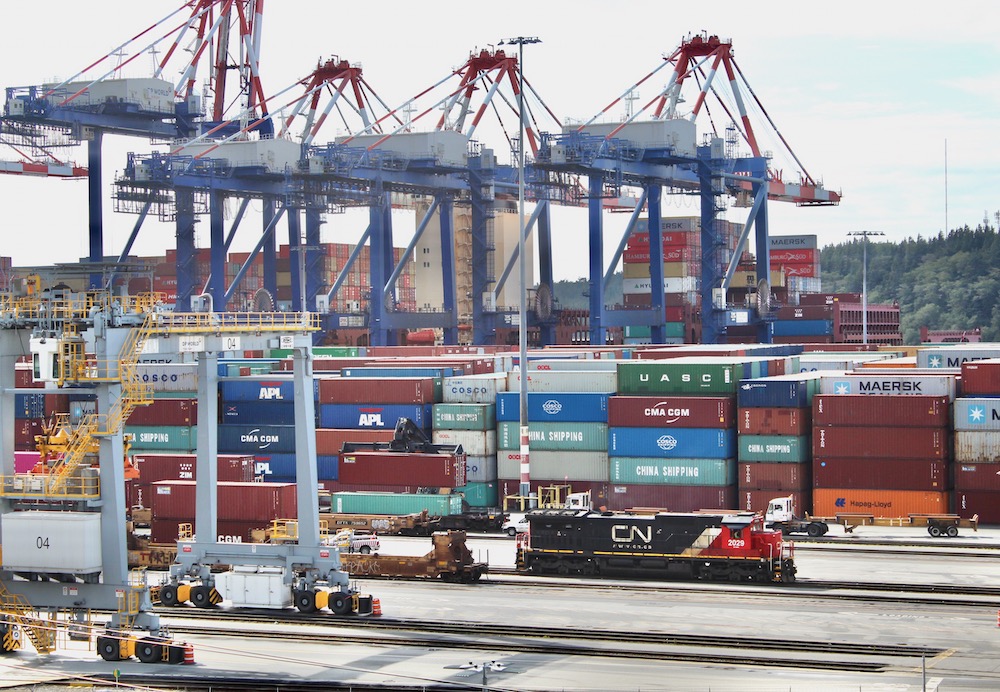
MONTREAL — Canadian National envisions the day when its main line to the Port of Prince Rupert, British Columbia, will host 50 trains per day.
“Our capacity right now on that line is about 25 trains a day,” CN CEO Tracy Robinson told an investor conference on Wednesday. “We’re running a little bit below that right now, so we have some capacity. But if you look out at all of the opportunities we see … over a longer period of time we could see building that line out in support of all those growth initiatives by another 25 trains, so doubling the capacity of that line.”
The container terminal at Rupert can currently handle 1.6 million TEU, or twenty-foot equivalent units, but by the end of next year will be able to accommodate 1.8 million after an expansion project is completed.
The addition of a second container terminal, currently envisioned for 2030-31, Robinson says, would give Prince Rupert the capacity to handle four million TEU per year, rivaling the current capacity of Vancouver, Canada’s busiest container port. Last year Vancouver handled 3.6 million TEU. The Roberts Bank Terminal 2 project, which last month gained government approval, will add 2.4 million TEU to Vancouver’s capacity in the early 2030s.
Prince Rupert has a community that supports the port and further development, Robinson notes. The port is two to three days’ sailing time closer to Asia than any other port, she says, and containers that land at Prince Rupert can reach Chicago faster than from any other port via CN’s premium service trains.
Construction is under way on the Ridley Island Export Logistics Project at Prince Rupert. The project, which gained final environmental approval in March, will include large-scale bulk and breakbulk transload facilities, an intermodal rail yard, and a container storage yard.
The facility will transload plastic pellets, cereal grains, specialty crops, lumber, and pulp directly from rail into containers for export. The first phase of the project will create 400,000 TEUs of export capacity.
Other carload commodities are expected to grow at Prince Rupert, as well. Last month Vopak Canada and AltaGas announced a joint venture to build a Ridley Island Energy Export Facility at Prince Rupert. The terminal will export Canadian propane, methanol, and diesel fuel to Asia.
The east end of the main line to Rupert also is expected to see significant growth due to a number of projects that are under way in northern British Columbia on the former BC Rail line north of Prince George. Northeastern British Columbia is experiencing a rebound in forest products, mining, and natural gas drilling that will account for 80,000 to 90,000 new carloads annually over the next three years. Mining includes copper, zinc, ores, and metallurgical coal.
Robinson says the timing of capacity expansion projects on the former Grand Trunk Pacific route to Prince Rupert will be on pace with traffic growth.
She spoke at the RBC Capital Markets Canadian Automotive, Industrials and Transportation Conference.


